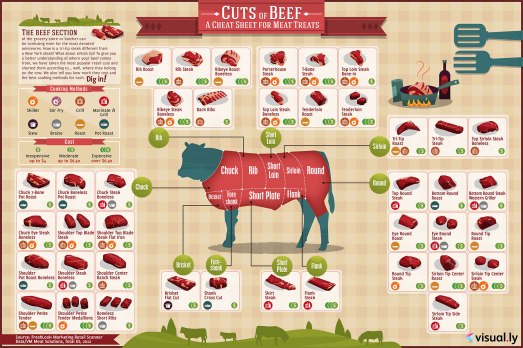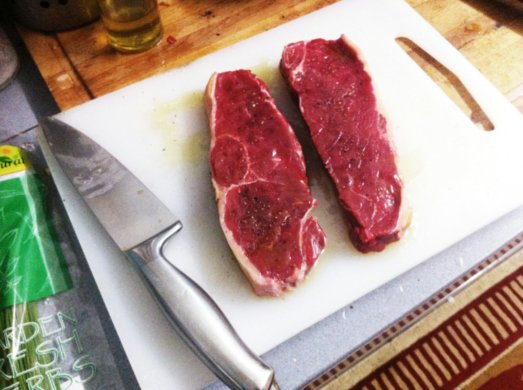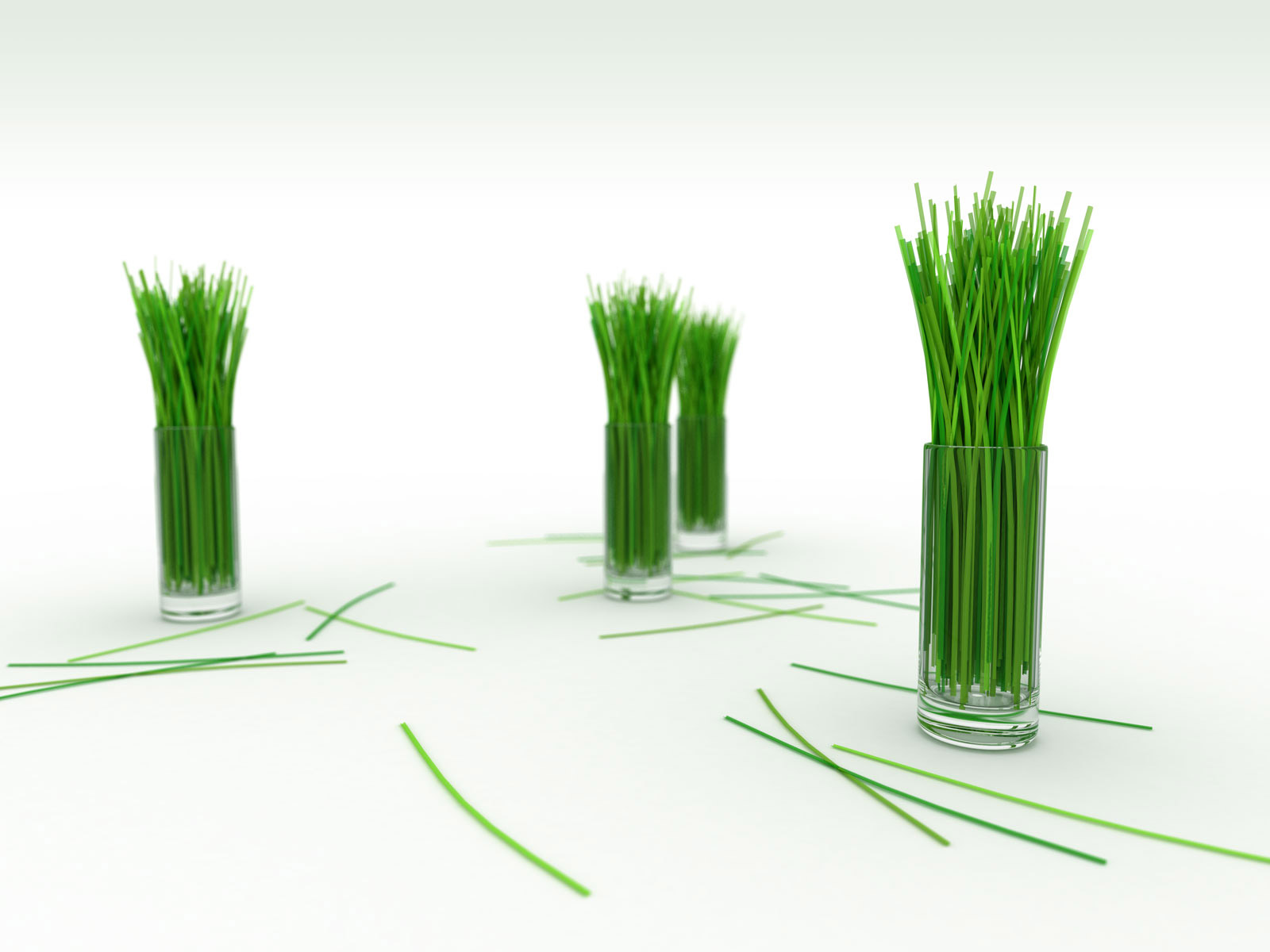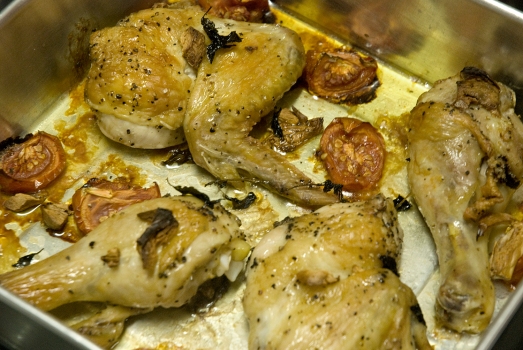I bet my ass that most of you when visiting a steak-house and ordering your RM50 a plate beefsteak, be it in places like Tony Roma’s to Chili’s, would know jack shit the difference between a sirloin, a T-bone or a New York strip. And when the server asked you the type of doneness you would like on your piece of meat, you would probably blurt out “well done” or “medium-rare” with the conviction of an executive chef of a Michelin-starred restaurant, when in fact, you have not a single idea what the hell does that mean, just so to save face to the server like you know what you want.
And let me tell you, anyone who ordered their beefsteak “well done” is a complete asshole, and does not deserve to savour the tastiness and juiciness of a piece of meat from a well grown cow.
Alas, this piece is not about the lesson of ordering beefsteak at a steak-house, but how to prepare the same RM50 a plate cuisine that is so easy to do at home. But, just for the sake of the discerning public and an extra knowledge about the wonderful world of meat, particularly beef, I would throw in some explanation about what is what and which is which.
Cuts of meat
Believe it or not, the meat that you are about to turn into delicious beefsteak or that you ordered from that smirking waiter comes from a cow. And a cow is such a huge animal that there are many parts of its body where the meat is derived from, and each part contributed to the texture and taste of the meat, as well as the price of it. Each part and their meat that comes of it are known as “Cuts of beef” in the world of cow linguistic.
Cuts of beef are first divided into primal cuts, pieces of meat initially separated from the carcass during butchering. These are basic sections from which steaks and other subdivisions are cut. Do not confuse the term “primal cut” to the term “prime cut” which is completely different. Prime cut is a term used to characterize cuts considered to be of higher quality. So you see, the general rule is, since the animal’s legs and neck muscles do the most work (i.e. eating, walking, kicking you off when to try to milk it), they are the toughest; the meat becomes more tender as distance from hoof and horn increases. Different countries and cuisines have different cuts and names, and sometimes use the same name for a different cut; e.g., the cut described as “brisket” in the US is from a significantly different part of the carcass than British brisket. So, for the purpose of this piece I shall use the US type of cuts as I prefer the Yankees than the snotty Brits in general.
Upon slaughter, the beef are split along the axis of symmetry into “halves”, then across into front and back “quarters” (forequarters and hindquarters).

Forequarter cuts
· Chuck: The steak from this part commonly known as Chuck steak and Ranch steak. The trimmings and some whole boneless chucks are ground for your burger meat.
· Rib: This is where your short ribs, the prime rib and rib eye steak come from.
· Brisket: Primarily used for barbecue.
· Shank: The toughest cuts, normally used for stews and soups. Never served as a steak.
Hindquarter cuts
· Short Loin: from which the T-bone, Porterhouse and New York Strip steak comes from.
· Sirloin: The very pricey sirloin steak comes from. There are two parts, bottom and top. Flap steak comes from the bottom part.
· Terderloin: The most tender, and ever more expensive that sirloin. This is where your Fillet Mignon, Tournedos, Chateaubriand and Terderloin steaks originated from.
· Flank: Inside Skirt and Flank steak. The flank is used mostly for grinding.
· Round: The round contains lean, moderately tough, lower fat cuts, which require moist or rare cooking. Some representative of steaks round steak, eye of round, top round, and bottom round steaks and roasts.
Degree of cooking
The doneness of your steak depends on the amount of time a steak is cooked. It is all about personal preference; shorter cooking times retain more juice, whereas longer steak cooking times result in drier, tougher meat but you wouldn’t worry about contracting e-coli, since the burnt meat will also burned all bacteria and viruses that may be hidden in it. Lest you make fun of yourself in front of your waiter/waitress, a vocabulary to describe the degree to which a steak is cooked are as the following:
· Raw: Totally uncooked. Sounds gross but actually used in dishes like steak tartare, carpaccio, gored gored, tiger meat and kitfo.
· Blue rare or very rare: Cooked very quickly; the outside is seared, but the inside is usually cool and barely cooked. The steak will be red on the inside and barely warmed.
· Rare: The outside is grey-brown, and the middle of the steak is fully red and slightly warm.
· Medium rare: The steak will have a reddish-pink center. This is the default degree of cooking at most steakhouses when you do not state any doneness level upon ordering.
· Medium: The middle of the steak is hot and fully pink surrounding the center. The outside is grey-brown.
· Medium well done: The meat is lightly pink surrounding the center.
· Well done: The meat is grey-brown in the center and slightly charred.
Additionally, a Chicago-style steak is cooked to the desired level and then quickly charred. The diner orders it by asking for the style followed by the doneness (e.g. “Chicago-style rare”).

Grilling
Now that we have learned some basic knowledge about the cuts of meat and the level of cooking for your steak, it is now time to put it on the griller. There are many type of griller out there, but my favourite and most convenient for me is the non-stick grill-pan. It may not be the most authentic grilling experience, but for a simple dinner with your partner at home it is sufficient enough. As always, treat your non-stick pan nice. Clean it with a kitchen wipe gently. If you really need to wash it please don’t scrub it like you would do to a wok. Grilling the perfect steak is an art form; it takes practice and patience to master it, particularly due to the many factors that played-in during the process (eg. temperature, quality of meat). However, with these simple steps you should have no trouble grilling a fantastic steak.
1. Allow your meat to reach room temperature before grilling. This helps grill a steak faster and more evenly.
2. Trim the steak of excess fat. This is the one that lines up the side of the meat, generally white in colour. The reason is, as it cooks, fat shrinks faster than the meat and can cause your steaks to curl.
3. Season. A light brushing of olive oil, some freshly ground black pepper and salt is all you need. Though, the seasoning is entirely up to you. Preheat the grill pan as hot as it will go.
4. Oil the grate of the pan.
5. Grill. Let the steak rest on the pan until it is done before turning the other side. How long that take depends on the thickness of the meat and how done you would like your steak to be (refer chart below). ALWAYS resist the temptation to turn over the steak while grilling to see how done it is because by doing that you would disrupt the momentum of the heat and the timing will run-off and ruin the doneness of the steak.
6. Use pressure test to check the doneness level of the steak. When getting close to having a done steak, press it with your index finger or the flat side of a grilling fork to get a feel for it. A rare steak will be soft. A medium steak will be firm but yielding. A well done steak will be firm.
7. Let the steaks rest for 5 minutes before serving. This will let the juices flow out from the center, redistributing moisture, so the whole steak is nice and juicy.
As a general rule, adhere to the grilling time by meat thickness as mentioned below. Please note that the times are approximate and will vary depending on the type of grill, heat, meat quality and so on. Divide in half the time for each side.
Thickness
1″ : 6-8(Rare), 8-10(Medium),10-14(Well done)
1 1/2″ : 8-10(Rare), 10-12(Medium),12-16(Well done)
2″ : 12-16(Rare), 16-20(Medium), 20-24(Well done)















